How the GOP Tax Bill Could Change Student Loans for Veterinarians
Thought the student loan chaos was winding down? Think again. House Republicans just rolled out a massive tax bill. While the headlines are focused on tax cuts and SALT deductions, there’s something buried in the fine print that could completely reshape how student loans work going forward. If you’re a veterinarian, especially a new grad with six-figure student loan debt, this isn’t just political noise. It could directly affect how much you can borrow, what your monthly payment looks like, and whether student loan forgiveness remains on the table. Here’s how the GOP tax bill could change student loans for veterinarians in 2025.
Key Tax Changes in the 2025 GOP Proposal
This is essentially a reboot of the 2017 Tax Cuts and Jobs Act, with a push to make many of those provisions permanent. Here’s is some of the items being proposed:
- 20% Qualified Business Income (QBI) deduction would remain for S-Corp and LLC owners.
- State and Local Tax (SALT) deduction cap would increase from $10,000 to $40,000.
- Child tax credit would temporarily increase to $2,500 per child, then revert to $2,000.
- Tip and overtime pay would be tax-exempt.
- “MAGA” savings accounts would be created, giving $1,000 per child born between 2025 and 2029.
The tax reform headlines will get the attention, but the real impact for veterinarians is happening in the student loan section.
Student Loan Reforms That Could Affect Veterinarians
The bill introduces sweeping changes to federal student loan repayment programs and borrowing limits. These are the most important updates:
1. New Repayment Assistance Plan (RAP)
This new plan would replace all current income-driven repayment (IDR) options, including SAVE, PAYE, IBR, and ICR.
- Loan forgiveness would only occur after 30 years, compared to the current 20 or 25.
- Monthly payments would increase, potentially by over 30% for some borrowers.
2. Forced Plan Transitions and Eliminations
If you’re already in SAVE, PAYE, or the newer version of IBR, you could be forced into the older IBR formula, which uses a higher percentage of your income and results in larger payments.
3. Parent PLUS Borrowers Lose Protections
This is a major shift for many veterinary families who have relied on Parent PLUS loans to help with school costs.
- Most Parent PLUS borrowers would lose access to income-driven repayment.
- Only those already consolidated into a Direct Loan and enrolled in ICR at the time of the bill’s passage would retain eligibility.
- New Parent PLUS loans would be eliminated beginning July 1, 2026.
4. Federal Student Loan Borrowing Caps
This change would drastically affect future veterinary students and schools:
- Undergraduate borrowing capped at $50,000
- Graduate borrowing capped at $100,000
- Professional programs, including veterinary school, capped at $150,000
These limits are well below the average cost of vet school, which means students would likely need to turn to private loans that don’t offer forgiveness, income-based repayment, or federal protections.
5. Student Loan Forgiveness Becomes Taxable Again
Forgiven debt would be considered taxable income, meaning borrowers could face a large tax bill in the year their loans are forgiven.
What This Means for Veterinarians with Student Debt
If you’re a practicing veterinarian or about to start vet school, here’s how these changes could impact you:
- Expect higher monthly payments under RAP or older IBR plans
- Plan for a longer repayment timeline, with forgiveness pushed further out
- Prepare for greater reliance on private loans, especially for future students
- Understand that forgiven debt may result in a tax bill, which could be significant
What Actions Steps to Take Now
- Review your current repayment plan to make sure it still fits your income and career path
- If you have Parent PLUS loans, consider consolidating into a Direct Loan and enrolling in ICR while you still can
- If you’re starting or finishing vet school, be strategic about how much you borrow and use the VIN Foundation Loan Simulator to test repayment scenarios
- Stay informed, especially with the 2026 sunset of the TCJA approaching
We know these proposed changes aren’t ideal, and for many veterinarians, they can feel downright overwhelming. Between the higher payments, longer timelines, borrowing limits, it’s a lot to process. But you are not powerless. By staying informed and taking a proactive approach, you can navigate these shifts with clarity and confidence. We’ll be here to help you every step of the way.
If you have any questions, reach out! I am here to help. We are all in this together.












